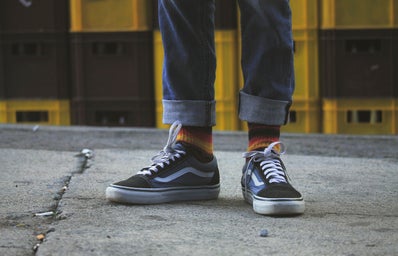The online fashion brand ASOS tweeted a picture that has since sparked outcry. The photo, which has been deleted by the account (@ASOS_Careers), seems pretty ordinary at first: a group of smiling young interns. But can you spot what’s wrong with this photo?
A: They’re all white.
There’s something off with this photo. This is not what the population looks like and it’s not an accurate representation of youth in the UK. What does this say about ASOS? It may not be what they believe, but this photo says that a coveted internship- the link to opportunities- is only available for the Caucasian.
The account deleted the photo and replied to the outcry claiming that this picture was not an accurate representation of the staff at ASOS:
So all the non-white interns weren’t welcome in the photo? It’s dangerous to accuse a brand of being wholly discriminatory, but if ASOS were aware of the need for diversity in the workplace you would think this photo would have immediately have stood out as being not okay. People weren’t happy:
The fashion industry in general is continually critiqued for its lack of diversity. The below chart shows the ongoing lack of change on the runway in terms of racial diversity at New York Fashion Week. Non-white representation has made no progress in recent years.
Designers repeatedly find excuses to disengage with diversity, some claiming the aesthetic of an all-white runway is necessary. For example, in 2013 Calvin Klein avoided employing non-white models because of its World War II theme. Would models from other ethnicities really have detracted from this aesthetic? Is historical accuracy more important than generating an industry of inclusion?
Advocacy group LordeInc writing for Interrupt Magazine puts it very well here:
“We see only you.” It’s an exception- not a rule- to see diversity in fashion. Models are employed to highlight an aesthetic, not be a person. This is somewhat true for any model in the catwalk style that has been adopted. For high fashion, models are not ‘people’ in the way we saw in the 90s: the likes of Kate Moss, Cindy Crawford and Naomi Campbell were celebrated as fashion icons and people. High-fashion designers these days want clothes to be primary. But this is only applicable for the models they chose- predominantly white ones.
Yes, we do see more models of colour in the spotlight: Jourdan Dunn, Joan Smalls and Chanel Iman are all faces of big labels. However, their triumph has not been without struggle. Smalls told Elle that she’s been faced with comments like “You’re a black model. It’s a challenge.” Iman told The Times that designer have said “We already found one black girl. We don’t need you anymore.” And this is the 21st century.
Companies and designers must embrace diversity; not because they ought to, but because they want to. Are designers afraid of diversifying or do white models just make better ‘mannequins’? It’s hard to say. The second statement has issues, however. Colour does not equal a state of being. Fashion must learn to be inclusive, not only because it is necessary, but because bleak impenetrable aesthetics need shaking up.
Edited by Caroline Chan
Sources:
http://jezebel.com/5985110/new-york-fashion-weeks-models-are-getting-whiter
http://vogueanonymous.com/runway-statistics-springsummer-2015-season/
http://interruptmag.com/article/allwhitecast
http://mic.com/articles/60451/why-is-the-fashion-world-so-white
http://www.thetimes.co.uk/tto/magazine/article3684885.ece
http://www.theguardian.com/commentisfree/2014/feb/18/black-models-fashion-magazines-catwalks
http://www.elle.com/culture/celebrities/a12642/joan-smalls-profile/

